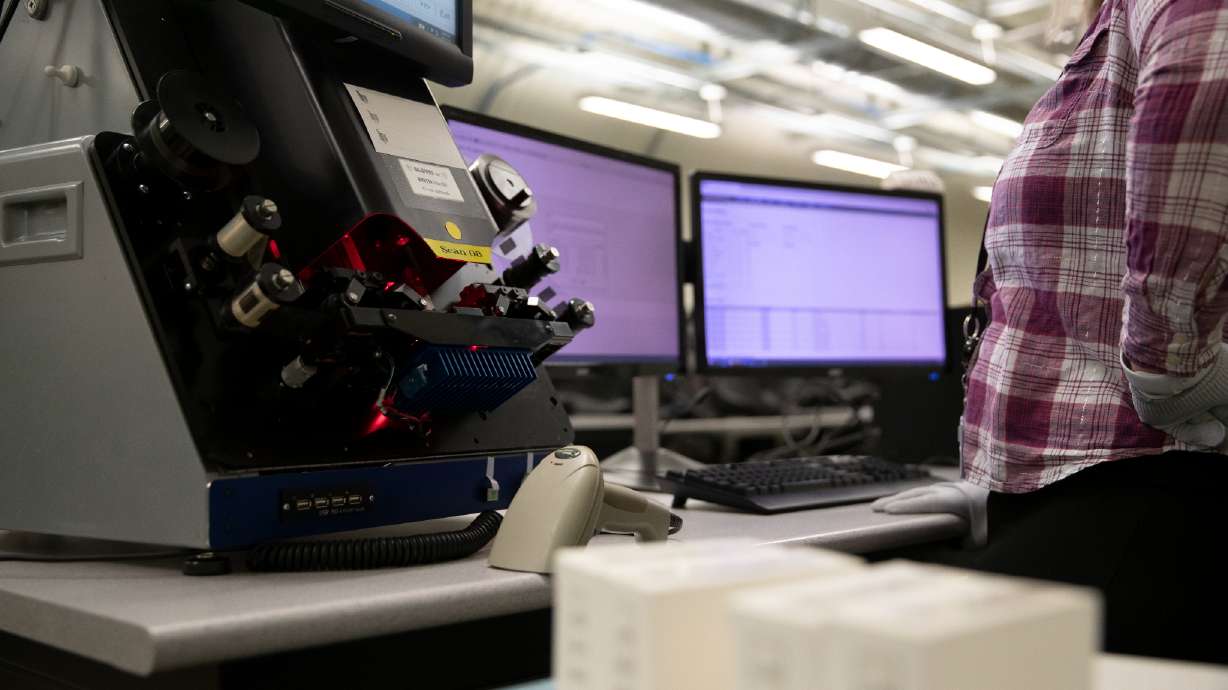Estimated read time: 4-5 minutes
This archived news story is available only for your personal, non-commercial use. Information in the story may be outdated or superseded by additional information. Reading or replaying the story in its archived form does not constitute a republication of the story.
SALT LAKE CITY — The Church of Jesus Christ of Latter-day Saints announced Tuesday that it has reached a milestone 83 years in the making — the completion of its microfilm digitization initiative, making billions of historical family records available to the public.
Throughout the digitization process, the church has released the records as they were digitized. Now at the finish line, 2.4 million rolls of microfilm were digitally saved, preserving the records of over 11.5 billion people from over 200 countries and principalities, and making them accessible for their descendants and family history enthusiasts.
The documents contain over 100 languages.
"These family history records are now available to anyone who has a computer, anyone who has an internet connection, and you can find documents and records now anywhere in the world that relate to your family," explained Kris Whitehead, a manager for FamilySearch International.
"It's something that I never thought that I would see in my lifetime with the projections that we had. I thought my kids, or my grandkids would see this. So for me to see the conclusion of this scanning effort, it's a dream come true," he added.
The church has been collecting, preserving and making accessible significant family history records, including birth, death, marriage, census, military service and immigration, for more than 100 years. The organization that became FamilySearch started microfilming in 1938, and the church was one of the first major organizations to use microfilm imaging to gather genealogical historical records through staff and missionary visits to religious and government archives all over the world.
The digitization of the microfilm began when the church purchased its first microfilm scanners in 1999 and has been in the works for more than 20 years since. Because of technological advances, the initiative has taken 23 years fewer than planned.
The team behind the project went from five employees to 30 using 26 scanners, along with thousands and thousands of volunteers who have helped microfilm, preserve and scan the records. These employees ensured that the images were quality, clear and readable. They even followed new procedures during the COVID-19 pandemic to keep the work going.
"It was the ability to capture the role quickly as one image and then use post-processing computer power to find all of the images. And it worked and it worked well," said Joseph Monsen, director of preservation services for the Church History Department. "This is one of the times that you just really saw the Lord's hand in this work."
A large portion of the digital images are already available on FamilySearch.org, but some will still have to be indexed and published until they will all be available online, Monsen explained.
"It's a game-changer for everybody in the world. So instead of having to come to the library, people can start accessing these records from home," said Becky Adamson, a research specialist at the Family History Library in Salt Lake City. She explained that digital images can help enhance the microfilm in ways that weren't possible before, like zooming in and not casting a shadow.
Whitehead said the documents, that in some cases no longer exist because of natural disasters, have benefitted his own family history work.
"Personally, I have used these records to find family members in eastern Canada. I had not been able to find anything about this particular branch of the family. … I found my family and found over 200 relatives that came from that. I wouldn't have been able to find these without the microfilming work that we had done over the number of decades," he said.
FamilySearch developed a network of family history centers worldwide to help patrons find the information to help connect individuals and families to their family histories. The organization plans to increase the digitization of new records worldwide from its digital camera operations. It is also in the process of digitizing its microfiche collection, which should be completed in the next several years. Microfilm distribution to these centers ended in September 2017, and the church announced that the project would become all-digital by the end of 2021.
"All of our cameras today are digital," Whitehead said. "So, we are continuing to grow our collection of images. We're just not growing it by microfilm. It's growing straight digital now."
The microfilm will continue to be stored and preserved in the church's secure and climate-controlled archives, to ensure the world's family history data is available for future generations.
"Microfilm was innovative in 1930. This has been innovative today. What will we have in the future? I can't wait to see," Monsen said.










